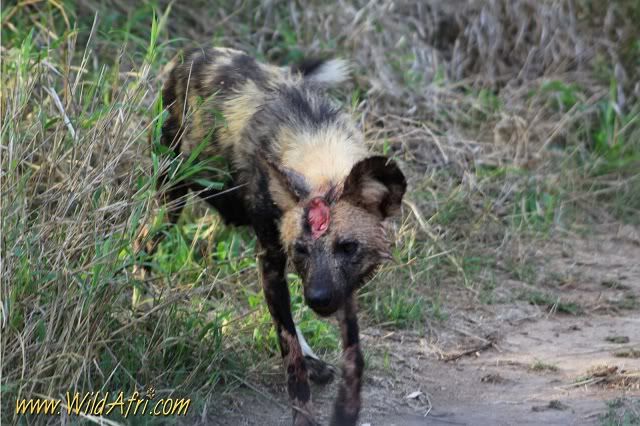Photo Credit: Kwando Safaris
http://www.arkive.org/african-wild-dog/lycaon-pictus/image-G4168.html
African
wild dogs have been pegged in the past as brutal killing machines that kill
slowly and more than is necessary to survive. Many scientists discount these
misconceptions with the desire to inform the public that the bashing of this
endangered species stems from incorrect hunter legends. Numerous scientific
observations have been published and it is now commonly believed that wild dogs
are not evil, savage monsters, but the most efficient hunters. In a study
by Schaller (1972), 70% of 133 wild dog attempts to bring down prey were
successful, while only 23% of 523 lion attempts were successful. One reason
wild dogs are more efficient is because they cooperate in packs. With a
structured pack, they are able to bring down more profitable animals like a
wildebeest. It is not as feasible for a
lone wild dog to take on this large animal himself. Therefore, if the wild dogs
cooperate, each individual benefits more than it would if he hunted by himself.
Because an individual receives more of a benefit and the cost of sharing it is
low in comparison, the wild dogs’ hunting strategy of working together has
become the most evolutionarily stable. Any other hunting strategy like taking
the killed antelope for ones own would merely put the cheater at a
disadvantage. The pack would not let the cheater be involved in a future hunt,
for example and as a result, he might not survive. These cheating genes would
die with him and the cooperative genes of working together to reap a bigger
reward would continue to live on in the cooperative members’ pups.
As
mentioned in the post on hunting, wild dogs communicate to each other before a
hunt, twittering and whining. Some believe this “social rally” is used to
organize the pack and I like to relate this to a sports team pumping themselves
up before the big game. However, this ‘game’ can mean life or death for the
pack and their offspring. After the rally, the pack targets their prey and takes
turns chasing it down. Once the closest wild dog grows tired, another member
with the most direct route to the target will step into take its place. The
pack then brings down the animal and disembowels it. Sometimes one member will
hold the prey’s head, while the other members kill the prize.
African
dogs are not like other canids. They are strict carnivores and do not scavenge.
They only eat animals they have killed. Some people may have taken the lack of
scavenging behavior to indicate that African wild dogs kill just for the sake
of killing, but wild dogs have evolved to be the most efficient killers in
order to feed everyone in their pack. Perhaps scavenging behaviors in wild dogs
did not evolve because scavenging does not yield enough food to feed the entire
pack. It may be more strategic for all the members to put their energies into
obtaining the most profitable food source, so that all of their kin may survive.
References





